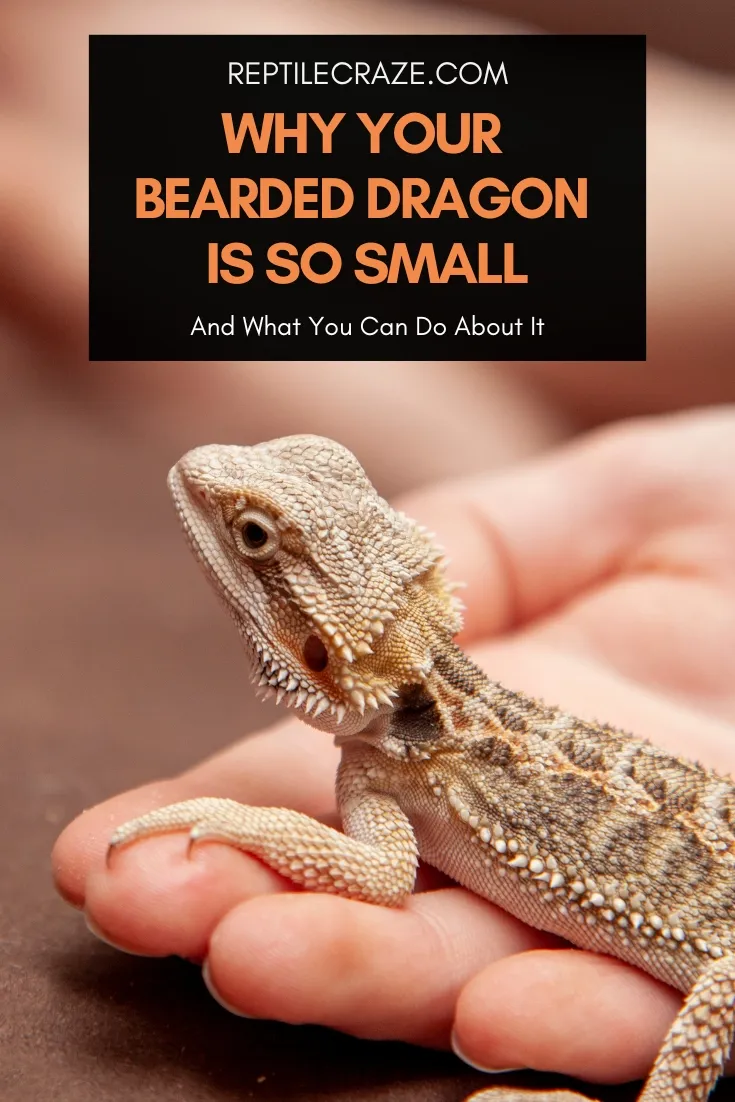
When you notice your bearded dragon is smaller than expected, you may begin wondering if there is something wrong with your pet, or if maybe you are doing something wrong as an owner. It is normal to be asking yourself: why is my bearded dragon so small? Is there something I can do about it?
A bearded dragon’s growth rate may be hindered by several factors such as malnourishment, parasites, viral infections, low temperatures in the enclosure, and insufficient calcium intake and/or UVB lighting exposure. However, some species of bearded dragons are genetically small.
As you see, there are many reasons why your pet could not be growing as expected. So, if you want to know more about the factors that could affect your bearded dragon’s growth rate and want to know how to prevent, detect, and fix those causes, then keep reading!
Table of Contents
Reasons Why Your Bearded Dragon Is So Small
Let’s have a look at the reasons for that:
Your Beardie Is Malnourished
As it happens with any living being, if a bearded dragon is not getting enough
A malnourished beardie will look weak, have a boney or thin tail, deflated fat pads, and appear sluggish.
To avoid malnourishment, you must offer your beardie a nutritious and balanced diet, as well as provide them with a stress-free environment.
Feeding needs for bearded dragons vary depending on their age, as shown in the following table:
| Hatchlings and babies | 2–3 times per day. Appropriately sized insects such as crickets, flies, etc. Chopped mixed vegetables every other day. |
| Juveniles | 2–3 times per day. Mostly small crickets and other insects. Chopped mixed vegetables, fruits, leaves, and flowers every other day. |
| Adults | Once every 1–2 days. Their diet should be 70 to 75% veggies or leafy greens, and 25 to 30% insects. |
Your Beardie Is Not Getting Enough Calcium
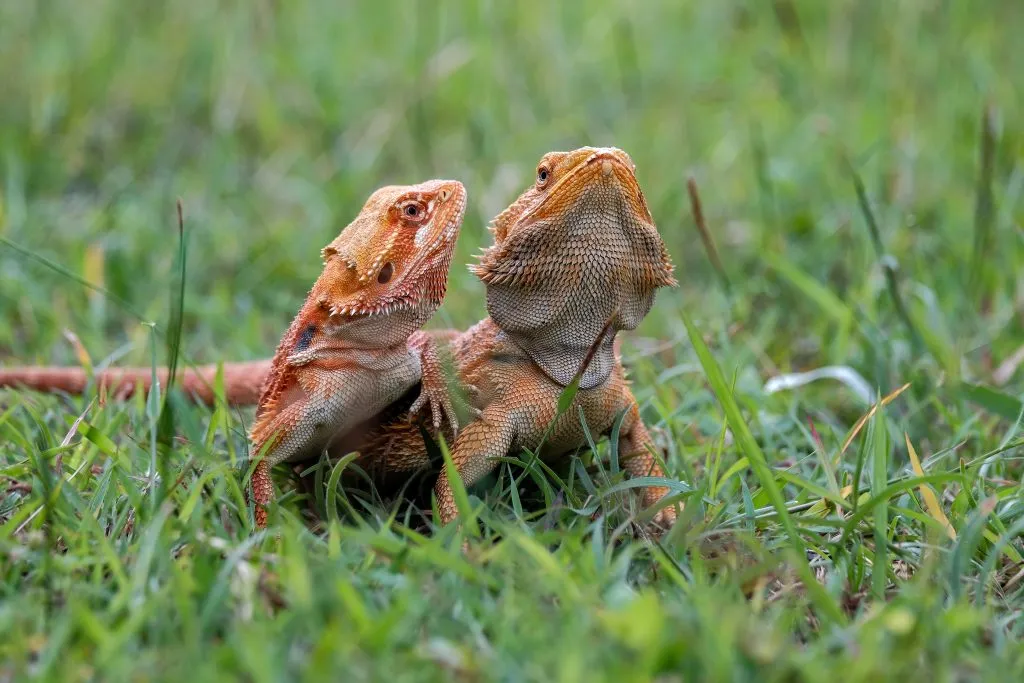
Calcium is important for your beardie to grow and have healthy bones, so if your beardie is not getting enough of this mineral, he or she won’t be able to grow properly.
If a beardie does not receive enough calcium for a prolonged period of time, it can develop a disorder called “metabolic bone disease” where the reptile’s bones get soft and brittle over time, which makes the beardie look deformed and unable to hunt or even stand still.
Bearded dragons can eventually die from metabolic bone disease if left untreated.
In captivity, bearded dragons have a tendency to have calcium deficiency. So, even if you are properly feeding your bearded dragon, you also need to complement its meals with calcium to ensure a nutritionally balanced diet.
Baby and juvenile bearded dragons should be given insects dusted with an appropriate reptile vitamin and mineral supplement containing calcium, every other day.
While adult bearded dragons should be fed a vitamin and mineral supplement containing calcium at least once or twice per week.
Additionally, you can also increase the amount of calcium-rich foods that you offer your beardie when giving it vegetables or leafy greens. Some good options include dandelion leaves, kale, collard greens, mustard greens, rosemary, cactus pad, etc.
You can also give calcium and a nutritious meal to feeder insects at least 24 to 48 hours before offering them to your beardie. This is called “gut loading”.
Need more info on beardie care? Read our bearded dragon care guide here!
Your Beardie Is Not Getting Enough UVB Light
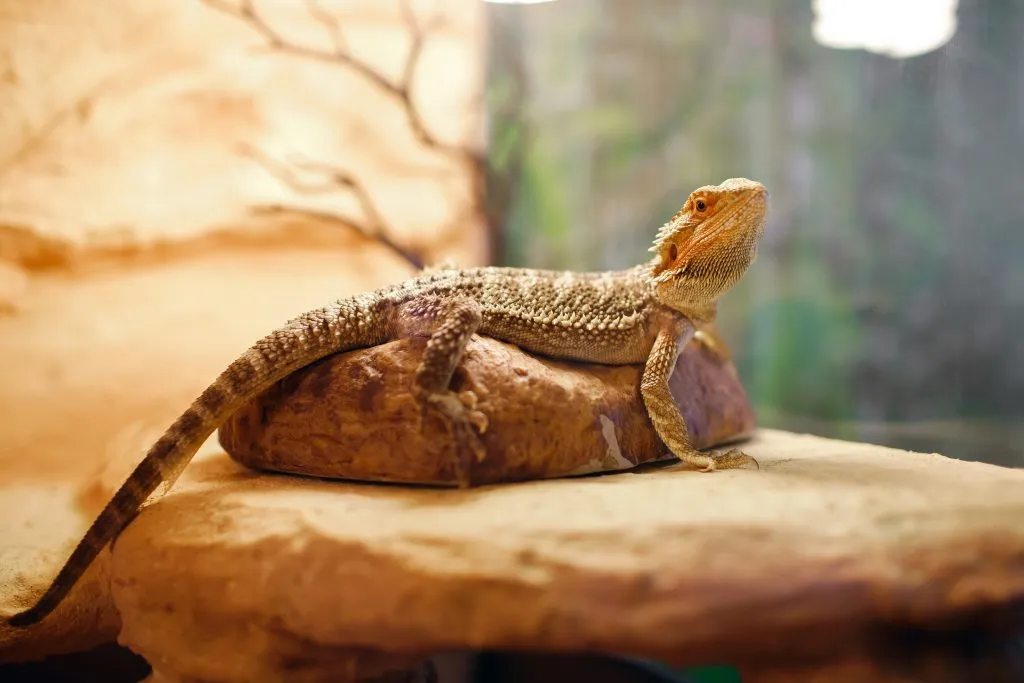
Ultraviolet B (UVB) light is important for your pet to synthesize vitamin D, which in turn is necessary to metabolize calcium.
Therefore, if your bearded dragon is not getting enough UVB light exposure, he or she won’t be able to get enough calcium and will show the same signs explained above in the section called “Your Beardie Is Not Getting Enough Calcium”.
This means your beardie’s bones will become soft and deformed, your pet’s growth will come to a halt, and he or she can even die if no corrective measures are taken.
Sufficient UVB exposure can be obtained from unfiltered natural sunlight or from a UVB lamp.
You should ideally expose your bearded dragon to natural sunlight for at least 30 minutes to 1 hour several times per week. Make sure to avoid overheating and provide access to adequate shade.
Commercial UVB lights should be left on for at least 12 hours per day, at a distance of around 12 inches (30 centimeters) from your bearded dragon.
If you are struggling to turn the lights on and off on schedule, you can get a programmable light switch timer to do it for you.
Tip: Make sure you get a good UVB light for your bearded dragon! We show you the best UVB lights for bearded dragons here!
Your Beardie Has Parasites
Bearded dragons are very susceptible to having parasites, even when in captivity.
A parasitic infection can happen when you don’t keep the enclosure clean, but it can also happen accidentally when beardies eat contaminated insects.
Parasites can harm your pet’s health and digestive system. Common signs include diarrhea, foul-smelling depositions, lack of energy, weight loss, and/or poor appetite.
If your beardie is young, a parasitic infection can also hinder its growth.
If you suspect your beardie may have a parasitic infection, you need to take it to the reptile vet for a stool test and treatment.
However, in any case, it is highly recommended to periodically perform a routine stool ova and parasite examination to rule out the presence of harmful parasites.
The Temperature In Your Beardie’s Tank Is Too Low
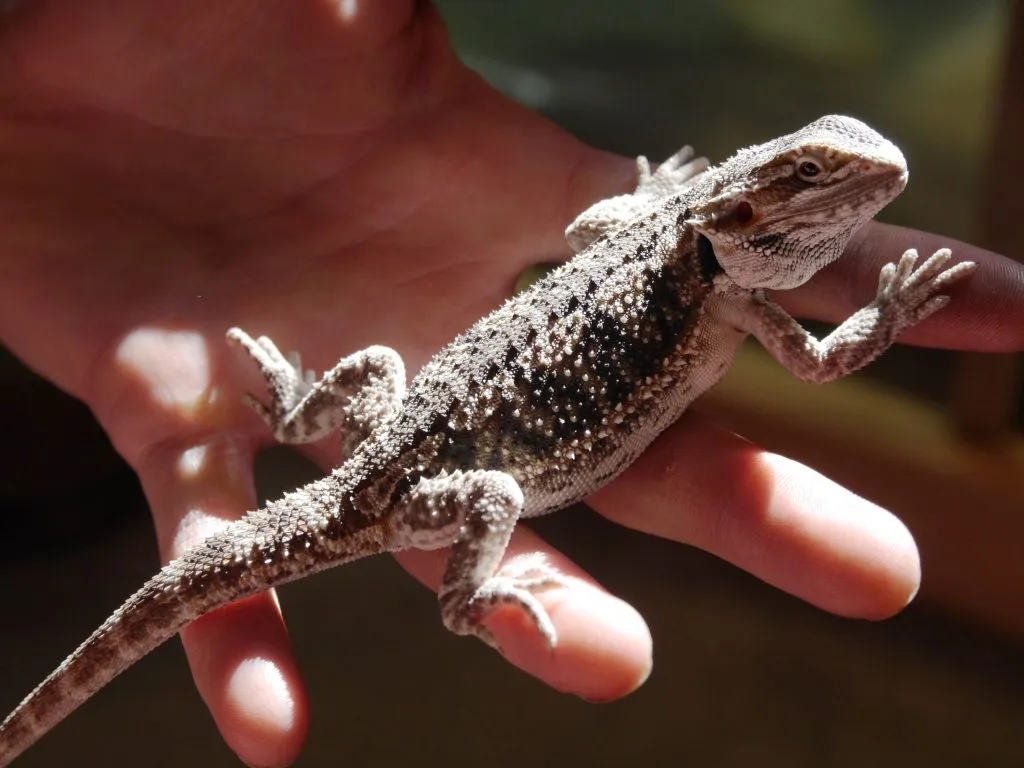
Bearded dragons are cold-blooded reptiles who are unable to produce heat on their own.
In the wild, bearded dragons live in hot environments, where they rely on external sources to warm their bodies and stay at an optimal temperature.
While in captivity, your beardie will rely on you to keep an ideal temperature in their enclosure. Here is a table that can serve you as a reference on how to set the temperature in the basking and cool areas, according to your pet’s age:
| Bearded dragon’s age | Basking area | Cool area |
| Baby | 100-110°F (37.7-43.3°C) | 80-90°F (26.6-32.2°C) |
| Juvenile | 95-100°F (35-37.7°C) | 75-80°F (23.8-26.6°C) |
| Adult | 95-100°F (35-37.7°C) | 75-80°F (23.8-26.6°C) |
Keep in mind that during the day, the average air temperature in the whole enclosure should range between 75 to 86°F (24 to 30°C). While, at night, the temperature should be kept around 70 to 75°F (21 to 24°C).
If the temperature in the enclosure is too low, your pet won’t be able to heat up properly; therefore, he or she won’t have much appetite or energy, and it won’t be able to grow as expected.
If the temperature is kept too low for prolonged periods of time, your beardie will go into a state of torpor called brumation. While on brumation, your beardie will hide, stay inactive, and completely stop eating.
To prevent accidentally setting up the wrong temperature levels in the enclosure, you should get a thermostat and a thermometer and make sure to check the temperature in your beardie’s
Your Bearded Dragon Has An Infection
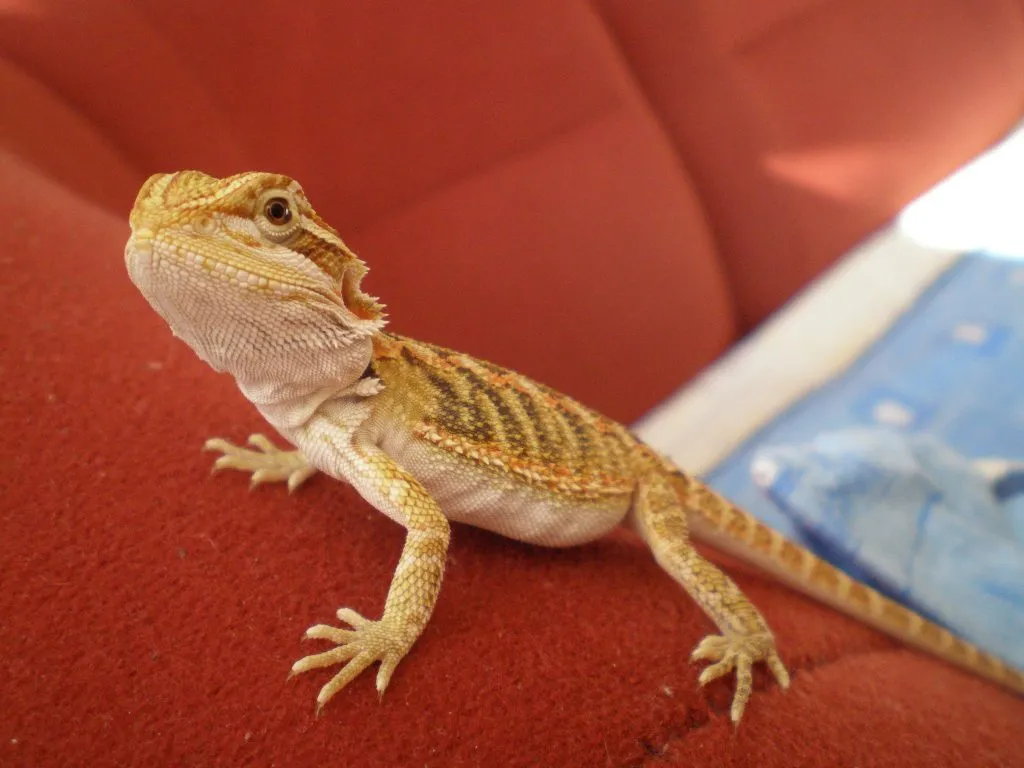
A viral infection known as adenovirus or atadenovirus can commonly affect bearded dragons.
Young bearded dragons infected with this virus will have poor growth among other signs and symptoms such as decreased appetite, weight loss, lack of energy, uncoordinated movements, and tremors.
Atadenovirus infections are fatal in most cases, so if you suspect your beardie may have been infected, take it to the reptile vet immediately.
Your Beardie Is Naturally Small
Although Pogona vitticeps is the most common species of bearded dragon kept as a pet, there are seven more Pogona species in the wild.
Here is a list that summarizes the Pogona species and how much an adult specimen can reach in length:
- Pogona microlepidota, 4 to 6 inches (10 to 15 cm)
- Pogona minor minima, 12 inches (30 cm)
- Pogona henrylawsoni, 12 inches (30 cm)
- Pogona nullarbor, 14 inches (35 cm)
- Pogona minor minor, 14 to 18 inches (35 to 45 cm)
- Pogona minor mitchelli, 18 inches (45 cm)
- Pogona barbata, 24 inches (60 cm)
- Pogona vitticeps, 24 inches (60 cm)
So, if you have a particularly small bearded dragon, make sure to know to which species it belongs. Maybe you have one of the less commonly-known species kept as a pet.
Does A Small Tank Influence Your Bearded Dragon’s Size?
Although many people think a bearded dragon’s growth rate depends on the size of its
Bearded dragons will still grow despite the size of their enclosure if all other husbandry conditions are met; however, when kept in a small
If you want to know more about this subject, read our other article: Do Bearded Dragons Really Grow To The Size Of Their Tank?
- Enchi Ball Python: A Unique and Stunning Morph of Python regius - March 27, 2025
- Emerald Tree Monitor: The Enigmatic Green Guardian of the Rainforest - March 26, 2025
- The Egyptian Cobra (Naja haje): A Fascinating Serpent - March 25, 2025
